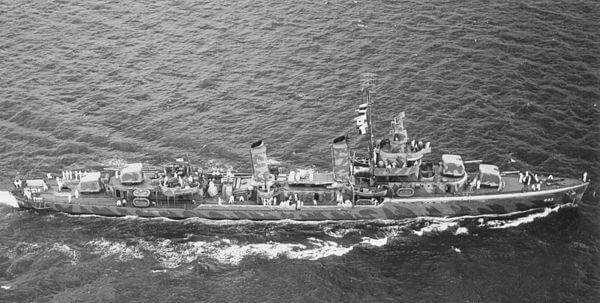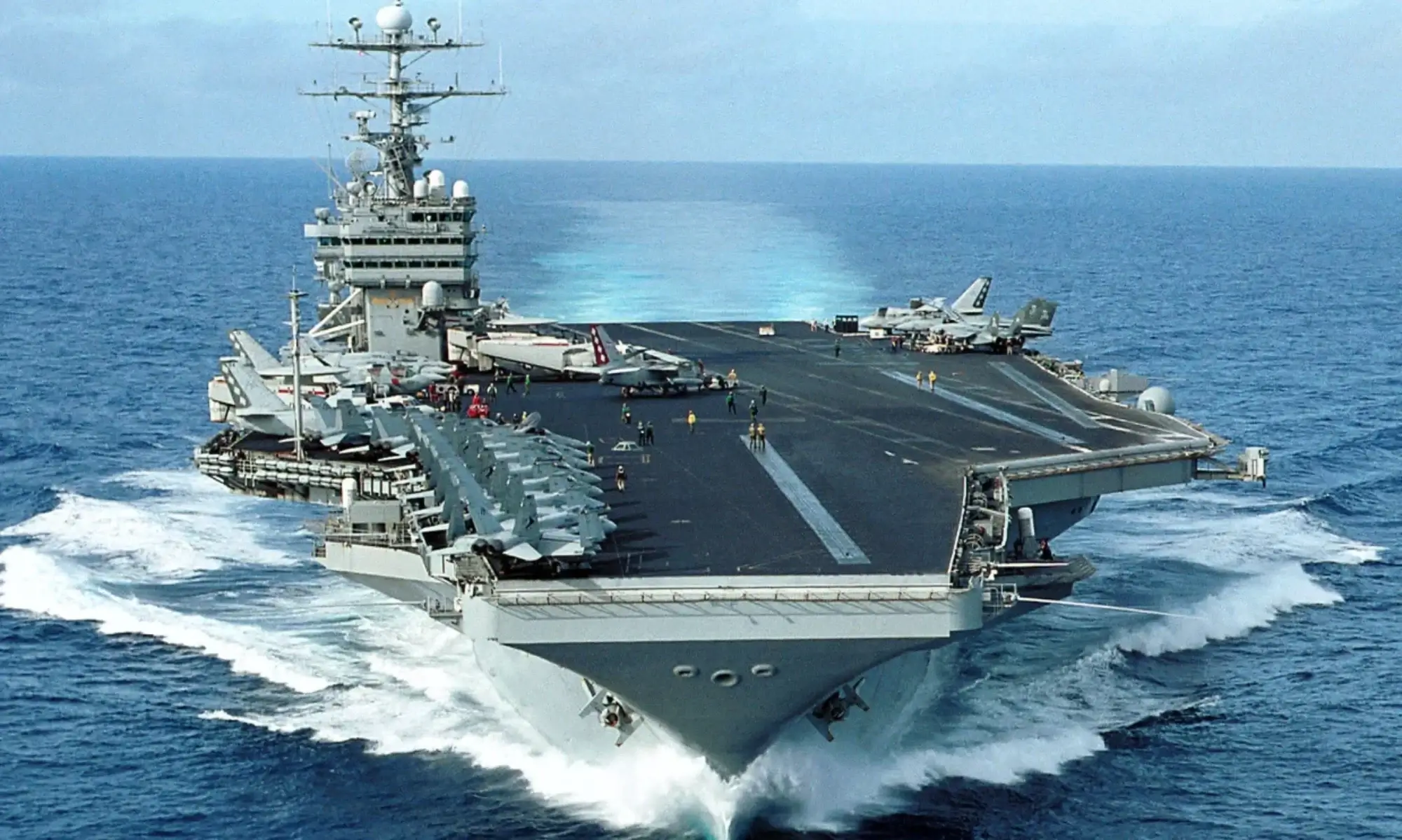
Introduction
The USS Murphy was a Benson-class destroyer that served in World War II and earned four battle stars for its actions.
We are grateful to Captain Lennon, a former crew member of the USS Henry B. Wilson, for sharing this story with us and allowing us to honor the memory of the USS Murphy and its crew.
But the USS Murphy also had a unique and tragic story that made it one of the most unusual ships in naval history.
In 1943, the USS Murphy was cut in half by a collision with a tanker off the coast of New Jersey, and its bow section sank with 38 sailors on board.
However, the stern section survived and was repaired with a new bow, and the ship returned to service until 1946.
In this blog post, we will explore the strange tale of the USS Murphy, the ship that sank but didn’t.
• The USS Murphy was commissioned in July of 1942 and joined the Atlantic Fleet. It was one of 30 Benson-class destroyers, which were 348 feet long and carried a crew of 260 enlisted men and 15 officers. The USS Murphy was armed with five 5-inch guns, six 0.5-inch machine guns, ten 21-inch torpedo tubes, and two depth charge racks .
• The USS Murphy first saw action in 1943 as part of Operation Torch, the invasion of North Africa. It provided fire support for the landing forces and engaged in several naval battles with the Axis forces. The USS Murphy took a hit in its starboard engine room while shelling a coastal battery at Point Blondin, Algeria, causing three deaths and 25 injuries among its crew . The ship returned to Boston for repairs and resumed its escort duty along the east coast.
• In July of 1943, the USS Murphy participated in the invasion of Sicily, where it again supported the landing forces and fought off enemy air attacks. After completing this operation, the ship returned to the US to escort convoys across the North Atlantic to Great Britain. It was during one of these convoys that the USS Murphy met its fate on October 21, 1943 .
• On that night, the USS Murphy was part of a convoy of 38 ships that left New York Harbor for Liverpool, England. The moon was waning in its last quarter, making it difficult to see in the dark. The USS Murphy received a report of an unidentified radar contact ahead of the convoy and was sent to investigate. The contact turned out to be one of the convoy’s own ships, the tanker SS Bulkoil .
• The SS Bulkoil was a T2 tanker that carried 140,000 barrels of fuel oil. It was 523 feet long and weighed over 10,000 tons. The captain of the SS Bulkoil mistook the USS Murphy for a torpedo attack and turned sharply to avoid it. However, this maneuver put the tanker on a collision course with the destroyer .
• The SS Bulkoil struck the USS Murphy at full speed on its port side, between its superstructure and forward stack. The impact was so powerful that it sliced through the destroyer’s hull and severed it in two. The bow section sank within minutes, taking with it 38 sailors who were trapped inside. The stern section remained afloat, thanks to its watertight doors and compartments .
• The survivors of the USS Murphy were rescued by other ships in the convoy, while the damaged stern section was towed back to New York by two tugs. The SS Bulkoil also survived the collision with minor damage and continued its voyage to England .
• The Navy decided to salvage what was left of the USS Murphy and rebuild it with a new bow section. The repair work took seven months and cost over $4 million. The USS Murphy was recommissioned in May of 1944 and rejoined the Atlantic Fleet .
• The USS Murphy resumed its service in World War II and took part in several operations in Europe. It supported the Normandy invasion at Omaha Beach in June of 1944, where it bombarded enemy positions and defended against air attacks. It also escorted convoys to France and Russia, patrolled the English Channel, and participated in the invasion of Southern France in August of 1944 .
• In January of 1945, the USS Murphy had a special mission: it transported King Ibn Saud of Saudi Arabia from Jeddah to Egypt, where he met with President Franklin D. Roosevelt aboard the cruiser USS Quincy. The meeting was part of Roosevelt’s effort to secure oil supplies and strategic alliances in the Middle East .
• The USS Murphy continued its service in the Mediterranean until the end of the war in Europe. It then returned to the US and prepared for the war in the Pacific. However, the war ended before the USS Murphy could join the Pacific Fleet. The ship was decommissioned in October of 1946 and placed in the Atlantic Reserve Fleet in Charleston, South Carolina .
• The USS Murphy remained in reserve until 1969, when it was stricken from the Naval Vessel Register. In October of 1972, it was sold for scrap. But somewhere, deep beneath the Atlantic Ocean, there was still a part of the USS Murphy that had never been recovered: its original bow section .
• The bow section of the USS Murphy still rests on its side under 260 feet of water, about 20 miles off the coast of New Jersey. It is a solemn reminder of the 38 sailors who died on that fateful night in 1943. The wreck was discovered by divers in 1989 and explored by several expeditions since then. In 2006, a team from the Seeker filmed the wreck for a documentary series called Quest for Sunken Warships. They left behind a commemorative plaque honoring the fallen sailors .
• Today, there is also a memorial for the USS Murphy and its crew in a park in Surf City, Long Island. The memorial consists of a plaque with the names of the 38 sailors who died in the collision, as well as a piece of metal from the ship’s hull. The memorial was dedicated in 1993, on the 50th anniversary of the sinking .
Conclusion
The USS Murphy was a remarkable ship that served in World War II and earned four battle stars for its actions. But it also had a unique and tragic story that made it one of the most unusual ships in naval history.
In 1943, it was cut in half by a collision with a tanker off the coast of New Jersey, and its bow section sank with 38 sailors on board.
However, the stern section survived and was repaired with a new bow, and the ship returned to service until 1946.
The USS Murphy was a ship that sank but didn’t, and its story is a testament to the courage and resilience of its crew and the Navy.
Let us have a moment of silence for the 38 sailors who lost their lives on that fateful night in 1943.
General characteristics
Class and type
Benson-class destroyer
Displacement
1,620 tons
Length
348 ft 4 in (106.17 m)
Beam
36 ft 1 in (11.00 m)
Draft
17 ft 4 in (5.28 m)
Speed
37 knots (69 km/h; 43 mph)
Complement
265
Armament
4 x 5 in (130 mm) guns
40 mm guns
5 x 21 inch (533 mm) torpedo tubes
4 depth charge throwers

